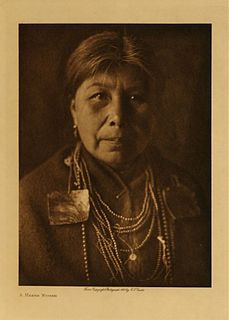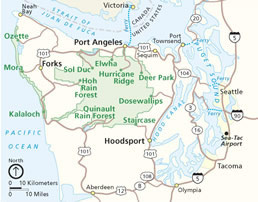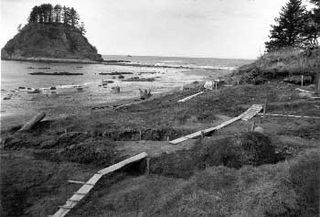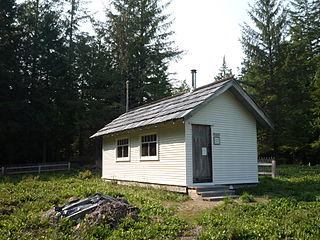| Ozette, Washington | |
|---|---|
| Unincorporated community | |
| Coordinates: 48°09′17″N124°40′02″W / 48.15472°N 124.66722°W Coordinates: 48°09′17″N124°40′02″W / 48.15472°N 124.66722°W | |
| Country | United States |
| State | Washington |
| County | Clallam |
| Time zone | Pacific (PST) (UTC-8) |
| • Summer (DST) | PDT (UTC-7) |
Ozette is an unincorporated community in Clallam County, Washington, United States. At 124 degrees, 40 minutes, 1 second West longitude, it is the westernmost populated area in the contiguous United States.[ citation needed ] The 22 mile long Hoko-Ozette Road, accessed via Washington State Route 112, terminates at the NPS Lake Ozette Ranger Station, within the coastal strip of Olympic National Park. The Lake Ozette Ranger Station, positioned at the north end of Ozette Lake, is approximately 3 miles from the Ozette Indian Village Archeological Site — an important archaeological site of the Makah people, located in the now unpopulated Ozette Indian Reservation. The land between the Pacific coast and the Ozette River was settled by a small community of Scandinavian immigrants at the end of the 19th century; these being amongst the first Europeans to establish a permanent presence on the extreme western fringe of the Olympic Peninsula.

In law, an unincorporated area is a region of land that is not governed by a local municipal corporation; similarly an unincorporated community is a settlement that is not governed by its own local municipal corporation, but rather is administered as part of larger administrative divisions, such as a township, parish, borough, county, city, canton, state, province or country. Occasionally, municipalities dissolve or disincorporate, which may happen if they become fiscally insolvent, and services become the responsibility of a higher administration. Widespread unincorporated communities and areas are a distinguishing feature of the United States and Canada. In most other countries of the world, there are either no unincorporated areas at all, or these are very rare; typically remote, outlying, sparsely populated or uninhabited areas.
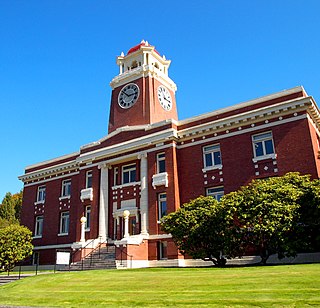
Clallam County is a county in the U.S. state of Washington. As of the 2010 census, the population was 71,404. The county seat and largest city is Port Angeles. The name is a Klallam word for "the strong people". The county was formed on April 26, 1854. Located on the Olympic Peninsula, it is south from the Strait of Juan de Fuca, which forms the Canada–US border, as British Columbia's Vancouver Island is across the strait.

The contiguous United States or officially the conterminous United States consists of the 48 adjoining U.S. states on the continent of North America. The terms exclude the non-contiguous states of Alaska and Hawaii, and all other off-shore insular areas. These differ from the related term continental United States which includes Alaska but excludes Hawaii and insular territories.
The area is popular with back-packers and day-hikers, many of whom undertake to complete the 9.5 mile long Ozette Loop trail; commencing/terminating at Lake Ozette Ranger Station and taking in the coastal locations of Sand Point and Cape Alava .
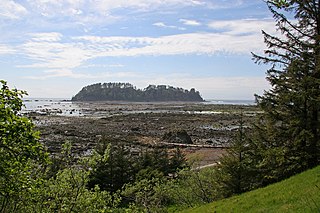
Cape Alava, in Clallam County, Washington, U.S., is the westernmost point in the contiguous 48 states. The westernmost point is located in Olympic National Park and the Makah Indian Reservation.
In 1997, a delegation from Mihama came to Ozette to commemorate the souls of three Japanese sailors whose ship ran aground in the area in 1834, and who were held briefly by the Makah before being released to Fort Vancouver. [1]

Mihama is a town located in Chita District, Aichi Prefecture, Japan. As of May 2015, the town had an estimated population of 24,306 and a population density of 526 persons per km². The total area was 46.39 square kilometres (17.91 sq mi).

Fort Vancouver was a 19th-century fur trading post that was the headquarters of the Hudson's Bay Company's Columbia Department, located in the Pacific Northwest. Named for Captain George Vancouver, the fort was located on the northern bank of the Columbia River in present-day Vancouver, Washington. The fort was a major center of the regional fur trading. Every year trade goods and supplies from London arrived either via ships sailing to the Pacific Ocean or overland from Hudson Bay via the York Factory Express. Supplies and trade goods were exchanged with a plethora of Indigenous cultures for fur pelts. Furs from Fort Vancouver were often shipped to the Chinese port of Guangzhou where they were traded for Chinese manufactured goods for sale in the United Kingdom. At its pinnacle, Fort Vancouver watched over 34 outposts, 24 ports, six ships, and 600 employees. Today, a full-scale replica of the fort, with internal buildings, has been constructed and is open to the public as Fort Vancouver National Historic Site.
Ozette is the westernmost settlement in the state of Washington.[ citation needed ]



